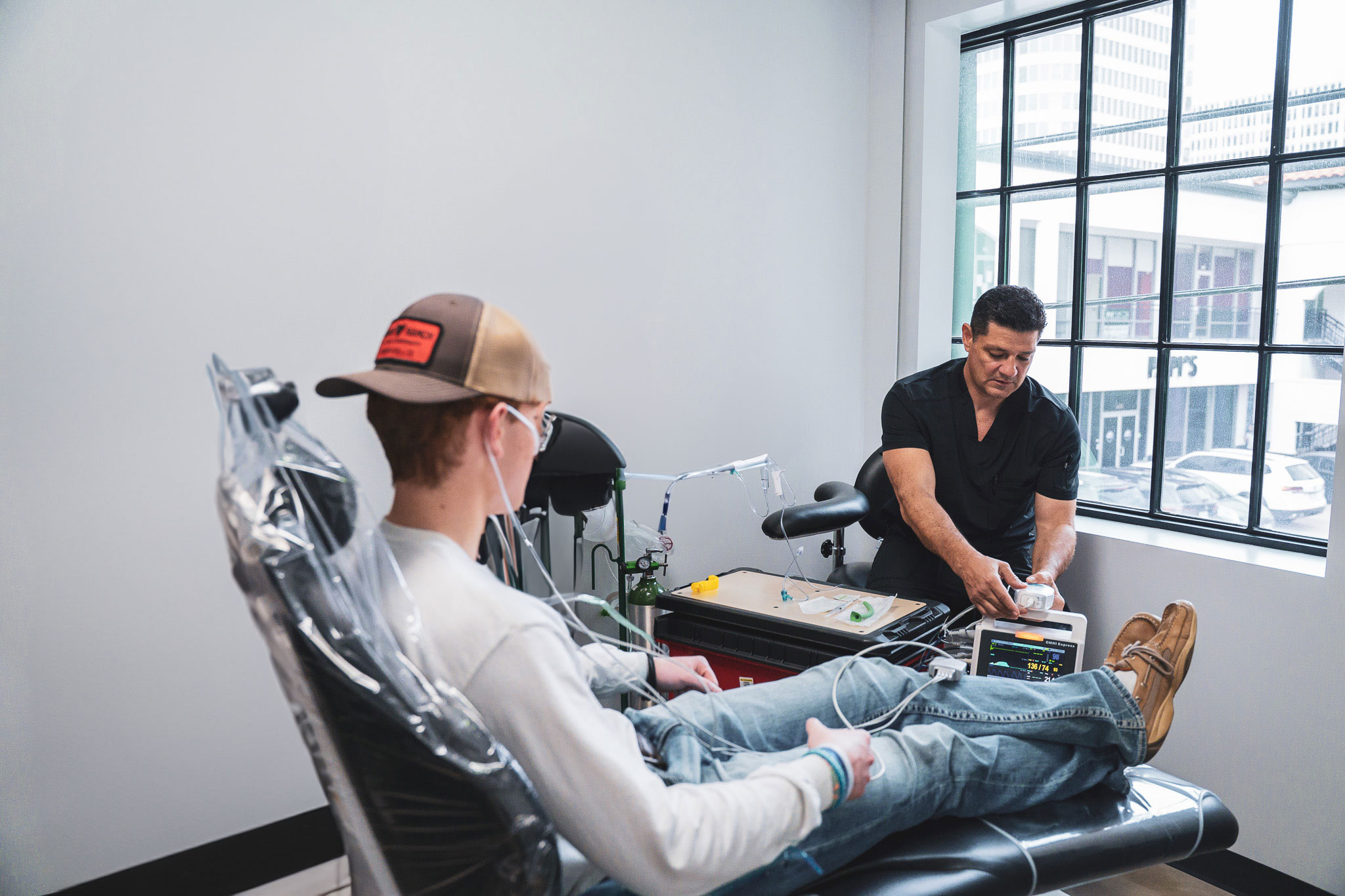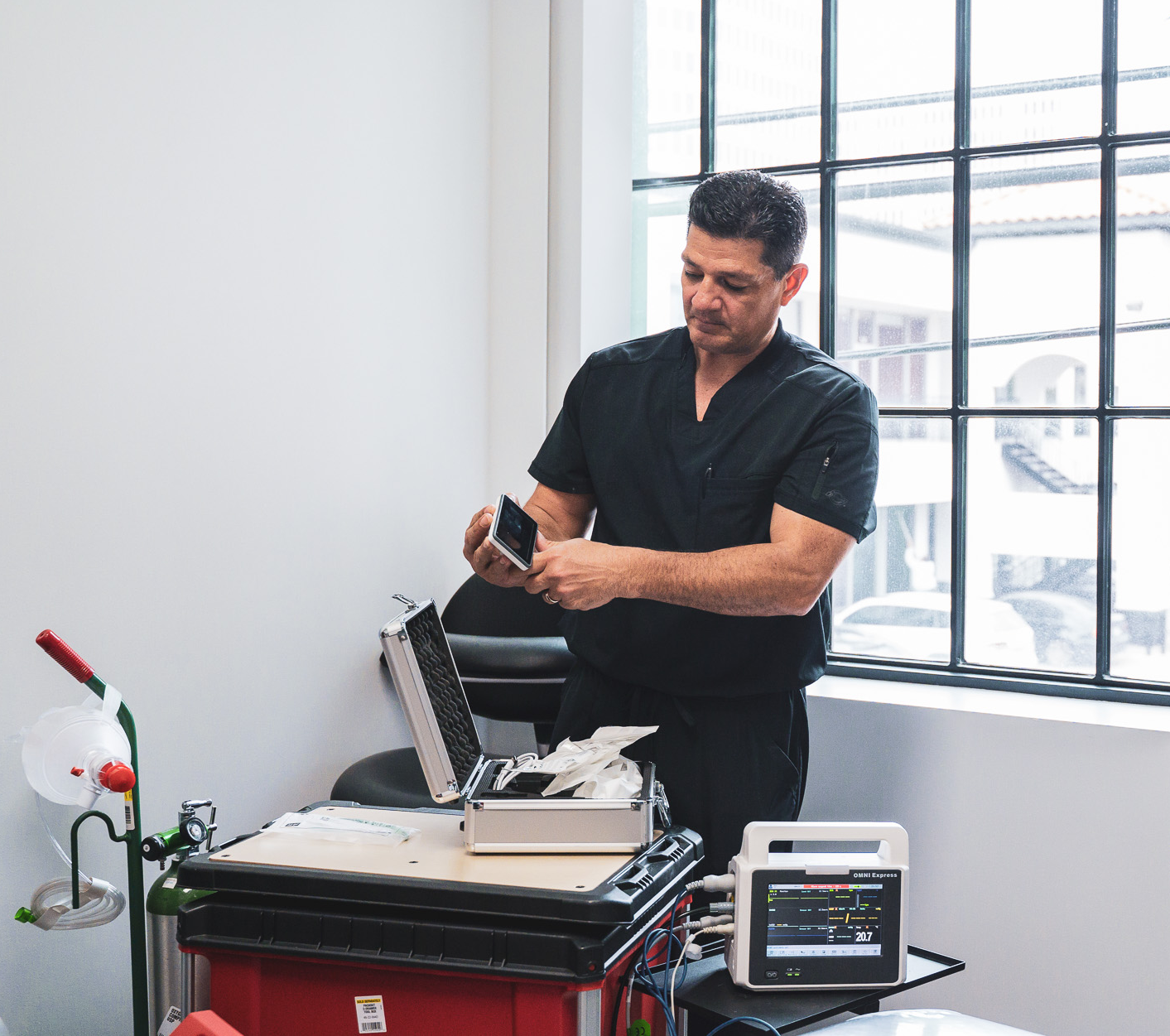As a medical professional, you know that sedation is crucial to many procedures. Patients can experience high levels of anxiety, pain, or discomfort during medical or dental procedures. Deep IV sedation, or general anesthesia, can help alleviate these concerns by allowing patients to enter a state of deep sleep, thereby reducing pain and anxiety. We provide a detailed guide to general anesthesia, including what it is, how it helps with chronic pain management, and what precautions you should take when administering it to your patients.


As a medical professional, you know that sedation is crucial to many procedures. Patients can experience high levels of anxiety, pain, or discomfort during medical or dental procedures. Deep IV sedation, or general anesthesia, can help alleviate these concerns by allowing patients to enter a state of deep sleep, thereby reducing pain and anxiety. We provide a detailed guide to general anesthesia, including what it is, how it helps with chronic pain management, and what precautions you should take when administering it to your patients.
General anesthesia, also known as deep IV sedation, is a type of sedation that induces a state of deep sleep in patients. During general anesthesia, patients are completely unaware of their surroundings and do not feel pain or discomfort during the procedure. This is different from regional anesthesia, in which a local anesthetic is used to reduce pain from a specific location for a minor surgery. The level of sedation is typically monitored by a trained physician anesthesiologist, who can adjust the medication levels as needed to ensure the patient remains asleep and comfortable while undergoing surgery.

General anesthesia is typically administered via an IV line, which allows the anesthetic medicine to be delivered directly into the patient’s bloodstream. The medication used in general anesthesia is typically a combination of pain medicine, anesthetic agents, and sedatives, which work together to induce a deep sleep state. The anesthetic agents block pain receptors in the brain, while the sedatives induce sleep and reduce anxiety. Together, these medications create a state of complete relaxation, allowing the medical or dental procedure to be performed without causing discomfort to the patient.

General anesthesia is typically administered via an IV line, which allows the anesthetic medicine to be delivered directly into the patient’s bloodstream. The medication used in general anesthesia is typically a combination of pain medicine, anesthetic agents, and sedatives, which work together to induce a deep sleep state. The anesthetic agents block pain receptors in the brain, while the sedatives induce sleep and reduce anxiety. Together, these medications create a state of complete relaxation, allowing the medical or dental procedure to be performed without causing discomfort to the patient.
There are several benefits to using general anesthesia for medical or dental procedures. Firstly, it allows patients to undergo procedures without experiencing pain or discomfort, making the experience much more tolerable. Additionally, general anesthesia can reduce anxiety and fear, which can help to make the entire process less stressful for patients. General anesthesia also allows more complex procedures to be performed, as patients can be kept still and unconscious for longer periods.


There are several benefits to using general anesthesia for medical or dental procedures. Firstly, it allows patients to undergo procedures without experiencing pain or discomfort, making the experience much more tolerable. Additionally, general anesthesia can reduce anxiety and fear, which can help to make the entire process less stressful for patients. General anesthesia also allows more complex procedures to be performed, as patients can be kept still and unconscious for longer periods.

While general anesthesia is generally considered safe and effective, several precautions should be taken when administering it to patients. Firstly, ensuring that the patient is in good health and is not suffering from any underlying medical conditions that could make the sedation riskier.
Secondly, it is important to closely monitor the patient’s vital signs throughout the procedure, including blood pressure, heart rate, and oxygen saturation levels. This can be achieved through specialized monitoring equipment, which allows the anesthesia provider to adjust medication levels as needed to ensure the patient remains safe and comfortable.
In addition to monitoring vital signs, it is also important to have the appropriate equipment in an emergency. This may include a defibrillator, oxygen tank, and other life-saving equipment. An emergency response plan should also be in place so that all medical team members are aware of what to do in case of an emergency.

While general anesthesia is generally considered safe and effective, several precautions should be taken when administering it to patients. Firstly, ensuring that the patient is in good health and is not suffering from any underlying medical conditions that could make the sedation riskier.
Secondly, it is important to closely monitor the patient’s vital signs throughout the procedure, including blood pressure, heart rate, and oxygen saturation levels. This can be achieved through specialized monitoring equipment, which allows the anesthesia provider to adjust medication levels as needed to ensure the patient remains safe and comfortable.
In addition to monitoring vital signs, it is also important to have the appropriate equipment in an emergency. This may include a defibrillator, oxygen tank, and other life-saving equipment. An emergency response plan should also be in place so that all medical team members are aware of what to do in case of an emergency.
Looking for a partner you can trust for all your general anesthesia needs? Level Up Anesthesia is a trusted partner for all general anesthesia needs, with experienced professionals and state-of-the-art equipment to provide safe, effective, and efficient services to meet the unique needs of patients. Contact us to learn more.
General anesthesia is often compared to conscious sedation, which is a type of sedation that allows patients to remain conscious and aware during the procedure. While conscious sedation can be effective for certain procedures, it is not as deep or comprehensive as general anesthesia. Conscious sedation may be appropriate for minor procedures, while general anesthesia is typically used for more complex or invasive procedures.


General anesthesia is often compared to conscious sedation, which is a type of sedation that allows patients to remain conscious and aware during the procedure. While conscious sedation can be effective for certain procedures, it is not as deep or comprehensive as general anesthesia. Conscious sedation may be appropriate for minor procedures, while general anesthesia is typically used for more complex or invasive procedures.

General anesthesia is suitable for many medical and dental procedures, including but not limited to dental procedures, wisdom teeth extractions, and more complex surgical procedures. General anesthesia may also be appropriate for patients who suffer from high levels of anxiety or who have difficulty staying still for prolonged periods. Some medical conditions may also require general anesthesia, such as certain heart or lung conditions, where the patient may not be able to tolerate conscious sedation.

General anesthesia is suitable for many medical and dental procedures, including but not limited to dental procedures, wisdom teeth extractions, and more complex surgical procedures. General anesthesia may also be appropriate for patients who suffer from high levels of anxiety or who have difficulty staying still for prolonged periods. Some medical conditions may also require general anesthesia, such as certain heart or lung conditions, where the patient may not be able to tolerate conscious sedation.
Are you ready to provide your patients with the highest level of care and comfort during their surgeries? Trust Level Up Anesthesia for all your general anesthesia needs. Our team of experts will work with you to tailor a plan that best suits your patients, ensuring their safety and satisfaction throughout the process. Contact us now!
As with any medical procedure, some risks are associated with using general anesthesia. These risks may include allergic reactions to the medication, respiratory depression, blood pressure or heart rate changes, and postoperative nausea and vomiting. However, the risk of experiencing these complications is generally low, particularly when the anesthesia is administered by a trained and experienced anesthesia provider.
More serious complications may occur in rare cases, such as aspiration (where stomach contents enter the lungs), seizures, or stroke. However, the risk of experiencing these complications is extremely low and can be further minimized through careful patient selection, thorough pre-operative evaluation, and close monitoring throughout the surgical procedure.


As with any medical procedure, some risks are associated with using general anesthesia. These risks may include allergic reactions to the medication, respiratory depression, blood pressure or heart rate changes, and postoperative nausea and vomiting. However, the risk of experiencing these complications is generally low, particularly when the anesthesia is administered by a trained and experienced anesthesia provider.
More serious complications may occur in rare cases, such as aspiration (where stomach contents enter the lungs), seizures, or stroke. However, the risk of experiencing these complications is extremely low and can be further minimized through careful patient selection, thorough pre-operative evaluation, and close monitoring throughout the surgical procedure.
General anesthesia care is a safe way to provide deep sedation for patients undergoing medical or dental procedures. It can help reduce pain, anxiety, and discomfort, allowing more complex procedures to be performed with greater ease. While there are some risks associated with the use of general anesthesia, these risks can be minimized through careful patient selection, thorough pre-operative evaluation, and close monitoring throughout the procedure.
At Level Up Anesthesia, patient care and safety are our top priorities. We provide turnkey sedation and anesthesia services for medical and dental offices, using the most modern and up-to-date technology and equipment to ensure the safety of our patients. Our experienced team of physicians, physician anesthesiologist, critical care medicine specialists, CRNAs, and administrative personnel have over 20 years of experience in providing cost-effective solutions to meet the needs of our clients.
Schedule an appointment with our anesthesia care team to learn more about our general anesthesia and IV sedation services to help your patients feel comfortable and relaxed.
